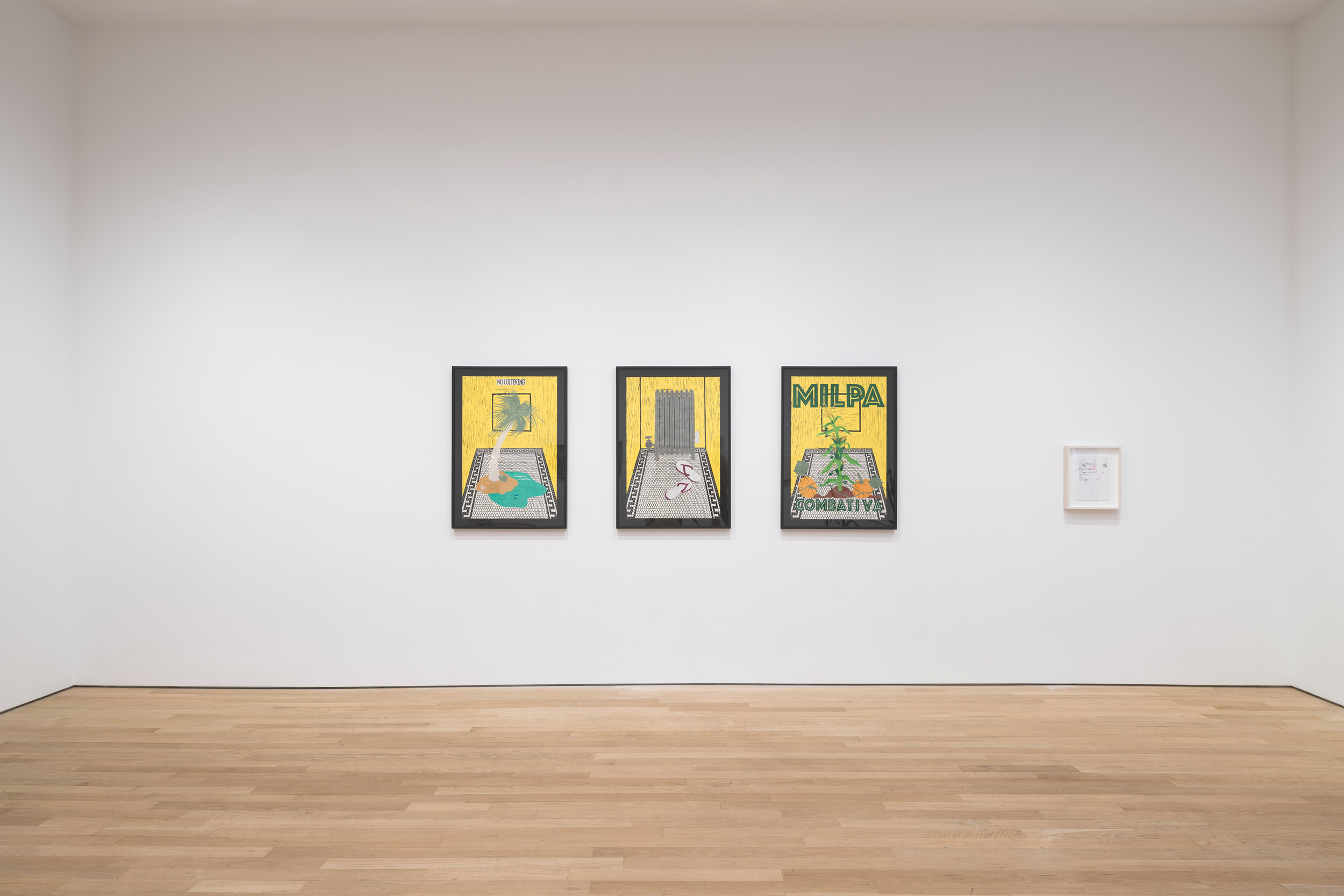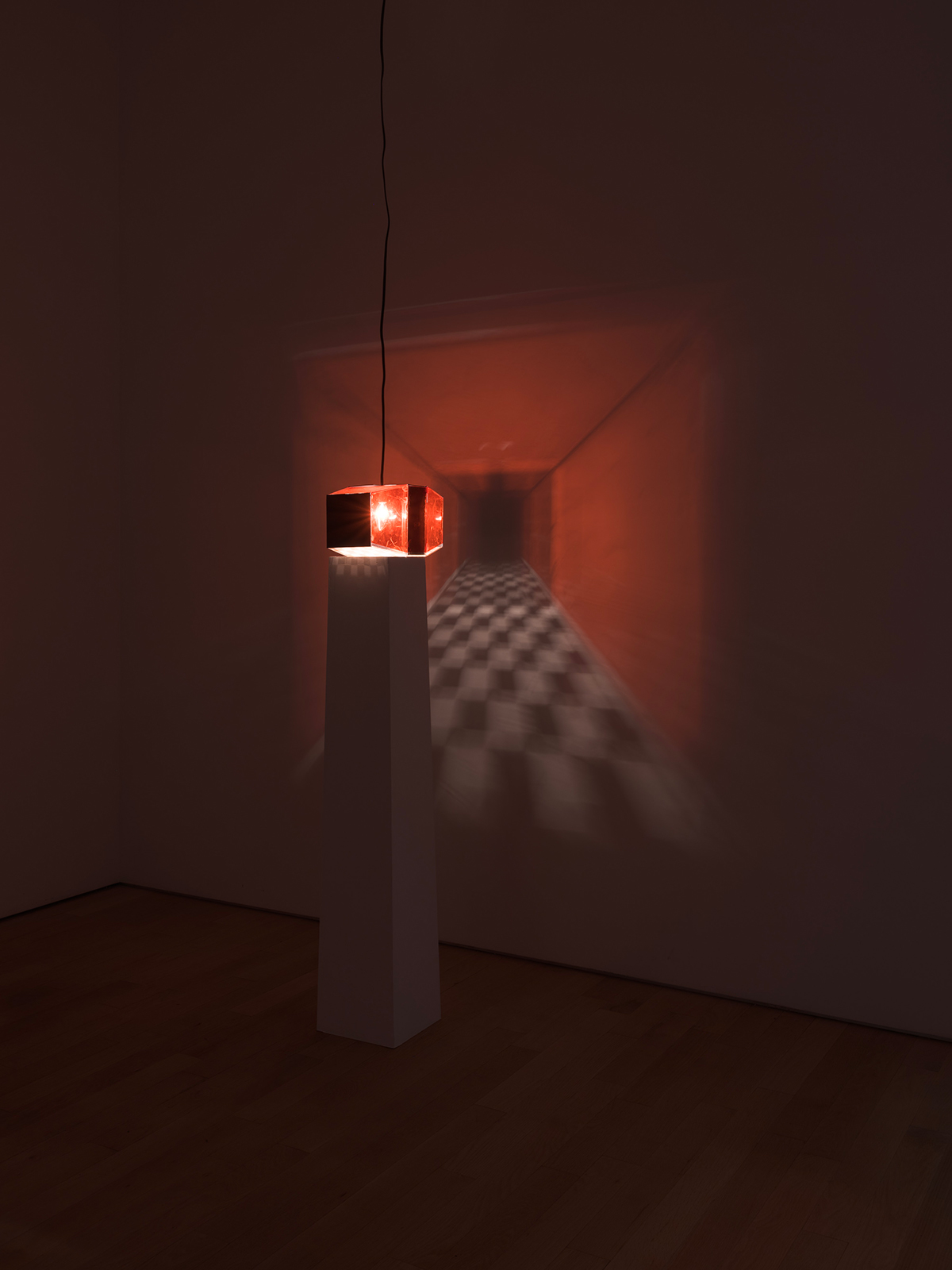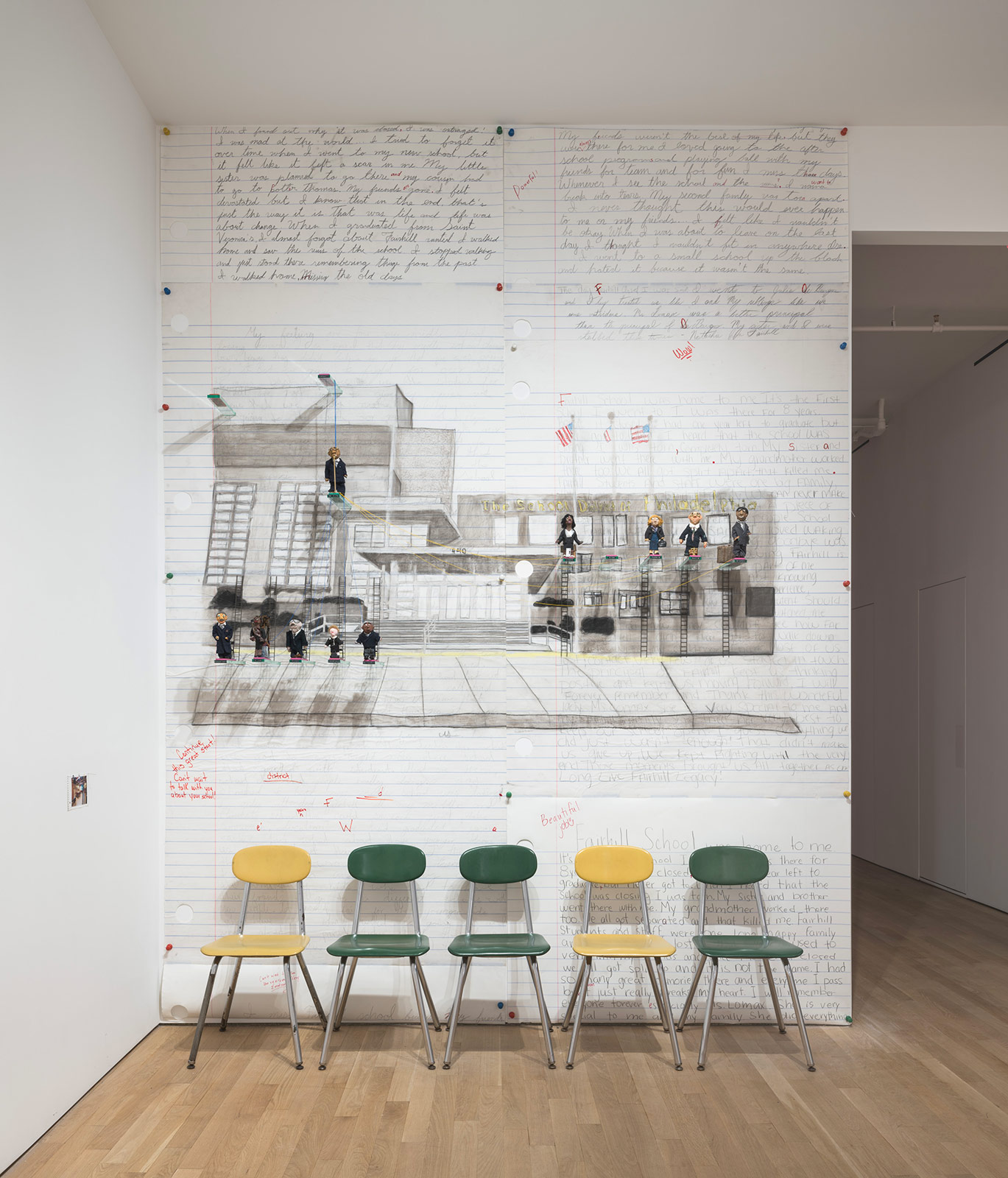Curated by Timmy Simonds and gallery director Eden Deering, the group show and performance program dissects the powers and possibilities of the classroom
Two professions, one predicated on power and the other creation, are at play in Airhead, a group show currently on view at the Lower Manhattan gallery PPOW. Featuring 16 works spread over four rooms, Airhead considers the role of the artist-as-educator, and vice versa. The exhibition lives alongside Faculty Meetings, a program of media, exercises, teach-ins, and performances, as part of an ongoing “itinerant” project called Miss Othmar School for Teachers. Timmy Simonds, an artist and professor at Pratt Institute, who curated the show with gallery director Eden Deering, explains that unlike working on a painting or a sculpture, “authority is always going to be a part of a teaching relationship.” While this may be true, the installations within Airhead, all of which are created by artists who consider themselves educators, suggest that art’s value lies not in pedagogy or prescription but in possibility.
Airhead is able to take on its expansive outlook by manipulating the viewer’s gaze. Toward the entrance of the gallery sits a row of green and yellow classroom chairs, which gleam under the harsh gallery lights. Plastered on the wall behind the chairs are papers and drawings by students who attended Fairhill Elementary, a school in Philadelphia that has since shut down due to city budget cuts. This installation, devised by Pepón Osorio, replicates the quintessential classroom setup, yet there is no one here to instruct you. All authority is absent. Standing before the work, the viewer takes on the role of the teacher, looking out onto a class that is not there.
In the next room, a television displays a video of Thai villagers sitting in front of Western paintings from varying time periods. The accompanying exhibition reader explains that the villagers are unfamiliar with the works that are put before them. In this way, the audience views the installation with the same curiosity that the villagers view the art in the video itself. Araya Rasdjarmrearnsook, who created the installation, blurs the line between learning from art and producing it—a theme throughout the exhibition. Although many of the artists that comprise Airhead have spent time honing their craft in the classroom, their careers in education do not only coexist alongside art-making—but can actually catalyze creation.
This is no small accomplishment. The relationship between art and instruction is often fraught. Think of the class rebel sitting in detention, etching a lewd drawing into a desk—or a sculptor kept from the studio by their multi-city adjuncting circuit. Within Airhead, educational institutions are rarely a point of contention but often influence or inspire the works. Located toward the back of a dimly lit room, 99 red apples are lined up on the ground, their waxy skins glinting. Alison Knowles, the artist behind the installation, encourages visitors to take a piece of fruit and leave an item of their own in its place. Many of the apples are already replaced with everyday objects: a hair elastic or a cigarette or a tube of lipstick. The work was first installed outside CalArts’s main building in 1971 and was devised after Knowles generated arbitrary combinations of numbers, colors, and directions and then asked her class to interpret the results artistically. Student involvement was also critical to a piece by Gabo Camnitzer, where a suit constructed out of mirrors was worn by scholars during school hours in order to explore conflicts between their sense of self and the world around them.
Like most of the works within Airhead, these installations do not prescribe a single interpretation because there is no one right way to learn, and there is never just one answer. To fully absorb Airhead, you must be able to hold, within a single glance, multiple complexities at once. Perhaps this approach to art resonates so deeply because it most closely resembles life. We look up to our teachers. We look at them as they stand before us, lecturing. We look to art in order to question the world. We look to art for aesthetics. These different ways of seeing are not lost inside the gallery. Like a suit of mirrors reflecting all angles of the light, Airhead renders visible varying perspectives surrounding education and creation. The art is as illuminating as it is captivating.















